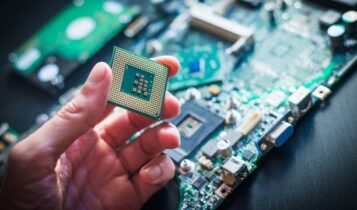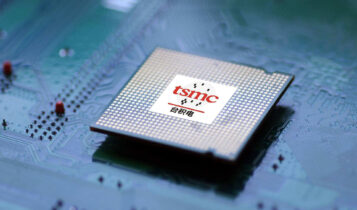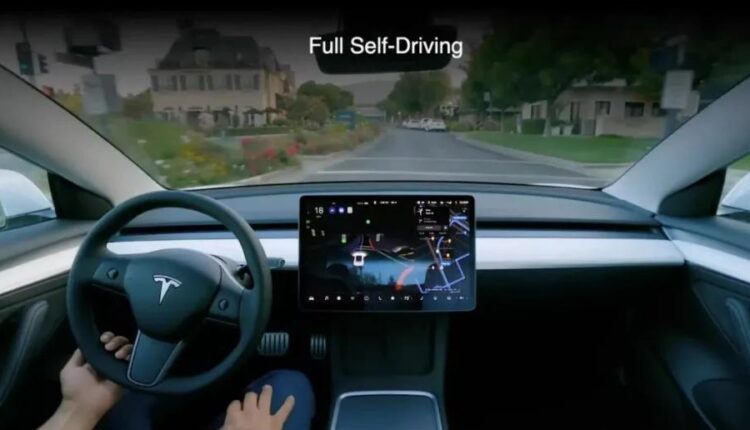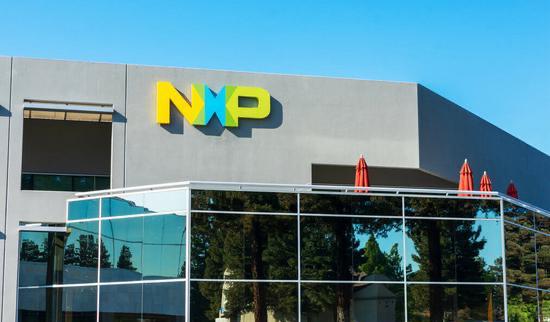Samsung Electronics “2nm Chips ?” is a super giant and a bright pearl of Samsung Group. It produces more smartphones than any other company in the world. The price of the memory chip sector it dominates has also soared due to the global semiconductor shortage.
Samsung Electronics has an annual revenue of 200 billion US dollars, which is not much lower than that of Apple, the most valuable company in history, and it also has 1000 billion dollars in cash.
Now, Samsung Electronics and its parent company Samsung Group have entered a key new chapter.
Battle of 3nm process then 2nm Chips
In August, Lee Jae-yong, the heir of the Samsung family, was released on parole. Previously, he was arrested for bribery and spent half a year in prison. His father Lee Kin-hee, president of Samsung Group, died in 2020, and Lee Jae-yong, who regained his freedom, took full control of the empire.
He has made a grand plan for Samsung Electronics, hoping that the company will dominate the manufacturing of cutting-edge logic chips used to process information, just like it does in memory chips and smartphones.
This will make Samsung Electronics confront chip manufacturing giants such as TSMC in Taiwan, China, Intel in the United States, and involve them in global competition in one of the most strategic industries in the world.
Chips are divided into memory chips and logic chips. Memory chips that store data are relatively simple and have become cheap goods, and logic chips that run programs and act as device brains are more complex and expensive.

On October 7, Samsung Electronics confirmed that it will produce some of the world’s most cutting-edge logical microprocessors in 2022, which are based on its latest “gate-all-around” architecture with a transistor size of 3 nanometers.
It also announced the large-scale production of 2nm chips from 2025, which surprised analysts. The company is forecast to invest about $370 billion in its business in 2021, which is astonishing.
Lee Jae-yong’s move will have a far-reaching impact not only on Samsung, but also on South Korea and the global semiconductor industry. The global chip shortage highlights the importance of the industry.
Samsung faces strategic challenges and the stock market has been performing poorly.
The company’s business can be simply summarized into two categories. The first category is manufacturing equipment: smartphones, TVs and household appliances. The second type is to produce parts, which are not only used for Samsung’s own equipment, but also sold to external customers such as Apple.
Samsung’s equipment manufacturing business can be further divided into two departments. Electrical appliances such as TV sets and washing machines, as well as digital devices (mainly smartphones). The parts business includes semiconductors and monitors.
The equipment business is not the growth point of profits.
People familiar with the company said that in Lee Jae-yong’s Samsung Electronics business structure, the home appliance business is at the bottom, lower than the TV sector with equally low profit margins, but it plays a greater role in strengthening Samsung Electronics’ brand power.
Next is the mobile phone business, which contributed more than half of its profits in the early 2010s. Although there is endless negative news about it, it still generates a lot of cash, and it also has some new positive effects due to the rapid sales of the new foldable screen mobile phone series.
In this hierarchical sorting, the top layer is semiconductors.
Historically, Samsung Electronics has focused on memory chips, accounting for 44% and 36% of the global market for DRAM chips (for temporary storage of desktops) and NAND devices (for permanent storage of mobile phones).
The memory chip business only generates a little more than 20% of revenue, but it accounts for nearly half of operating profits and has a rich profit margin.
Insiders said that if there is a conflict between the equipment business and the parts business in pricing or other terms, the parts business will be given priority. According to the company, its unique ecosystem benefits from having different businesses that allow internal innovation while providing stability in the ups and downs of the industry cycle.
Analysts believe that Samsung Electronics’ memory chip manufacturing still has a lot of vitality. Nicolas Gaudois of UBS said that memory chips can only develop upwards because they are crucial to storing and processing data from various industries.
Omdia, a research company, predicts that the global memory chip market will grow at a double-digit rate every year between 2020 and 2025. Due to the surge in demand for data centers and the pursuit of extreme miniaturization on the supply side, it is difficult to improve production capacity, so the cycle becomes long.
conservatism
Samsung Electronics said that it has proved its ability to innovate and create value in existing businesses. However, some investors are worried that the demand for memory chips may weaken by the end of 2021.
Another way is to follow Apple’s service business, which accounts for one fifth of iPhone manufacturers’ revenue from 8% in 2012.
However, despite some successes, especially in payment and health applications, Samsung Electronics has done too little to add software and services to hardware.
This is partly because Samsung Electronics’ hardware priority approach is deeply rooted in corporate culture. Lee Jae-yong’s personality and personal experience may deepen this idea.” He is very cautious and conservative, and more cautious than his father. A former Samsung Electronics executive said.
This innate conservatism was consolidated by his first investment at Harvard Business School.
At the end of the 20th and 90s, at the peak of the Internet bubble, Lee Jae-yong invested in eSamsung, a venture capital company. Subsequently, the company went bankrupt, and Lee Jae-yong became highly suspicious of South Korean software engineers.
Showing a lot in services may endanger Samsung Electronics’ long-term and successful partnership with software giants such as Google and Microsoft.
In 2014, Samsung Electronics launched a streaming music service called Milk Music, which was shut down two years later, although it was successful.
Google believes that Samsung has begun to get involved in software to disrupt the Android ecosystem and feel threatened, a former executive recalled. I think Samsung has given up software and services. He is afraid of missing a great opportunity.
Because it combines several relatively independent businesses, there are the disadvantages of enterprise groups. Samsung Electronics is poorly performing compared with other giants, whether it is consumer electronics (Apple and Xiaomi) or chip manufacturing (TSMC and Intel).

The company’s shares are only listed in Seoul. Due to investment restrictions on individual stocks, local investors used to sell Samsung Electronics, which accounted for nearly one-fifth of KOSPI (Korea Composite Stock Index), whenever Samsung Electronics’ share price soared. And the company’s huge cash pile also depressed the return.
Therefore, despite Samsung Electronics’ stable operating performance, its stock price has been hovering between 1 and 1.5 times the forward book value, far lower than that of its peers.
The company increased its dividend from 22% of its net profit in 2018 to 78% in 2020, which more than doubled Samsung Electronics’ market value in the two years ending January 2021. But Apple’s market value almost tripled in the same period.
The strong prospect of semiconductors and the extended cycle of memory chips have not yet been translated into higher valuations. Samsung Electronics’ market capitalization has fallen by 13% since the beginning of 2021, while the Stark index in New York and most global chip manufacturers have made profits.
“Conflict” with Apple
Lee Jae-yong bets on cutting-edge logic chips in an attempt to reverse the poor performance. The purpose is to win a big cake in the fast-growing and lucrative non-memory chip market, which accounts for 70% of the global $5500 billion semiconductor market.
Lee Jae-yong has set a goal of manufacturing processors for customers to reach Samsung Electronics’ memory market share of about 40%.
The task of the Samsung heir is very difficult. In 2016, Samsung Electronics’ OEM business was hit when Apple transferred all its business of A-series processors for iPhone to TSMC.
This is a typical example of Samsung Electronics’ complex structure and key customers. Half of Samsung Electronics’ OEM output is spent on its equipment department, and the rest is supplied to external customers.
Compared with Samsung Electronics, Apple prefers TSMC, a pure OEM, because it competes with Samsung Electronics in the smartphone field.
So far, it is far from the goal Lee Jae-yong proposed a few years ago. The company has a market share of about 15%, while TSMC has more than 50%.
TSMC plans to invest $1 billion in new production capacity over the next three years. Samsung Electronics’ non-memory chip revenue accounts for only 7% of total sales, and its profit share is even lower.
Conflicts of interest are not the only stumbling block. Although memory and logical services have something in common, they are different at some key points.
The production of memory chips is mainly about speed, quantity and economies of scale. Making cutting-edge logic processors is much more technically complicated. Engineering is carried out in nano dimensions, and customers have also begun to ask for customized silicon.
Technically, Samsung Electronics (and almost all other companies) has lagged behind TSMC in cutting-edge processors for at least the past two generations.
Part of this is the excessive caution of Samsung Electronics. A semiconductor director of a company said that Samsung Electronics did not predict their needs, but had been responding passively.
cooperate with Tesla
Aware of these problems, Lee Jae-yong obviously hopes to accelerate the transformation of Samsung Electronics.
The company is using its R&D capabilities to take risks on the next generation of logical chips, such as the new cutting-edge chip architecture. The company does not subdivide how much of its capital expenditure is spent on memory chips and how much is spent on logic chips.
Sanjeev Rana of LYON Securities pointed out that the new customers the company is seeking, such as NVIDIA and Tesla, do not overlap with other businesses.
According to the Korean Economic Daily, since the beginning of 2021, Tesla and Samsung have discussed chip design many times and exchanged the chip prototype of Tesla upcoming Hardware 4 self-driving computer.
According to the report, if Samsung takes the order, it is expected to manufacture Tesla’s next-generation self-driving chips based on Samsung 7nm chip production process. Samsung is already producing chips for Tesla current Hardware 3 computer. “so, what situation after start 2nm Chips?”

According to analyst TrendForce, Samsung is second only to TSMC in the chip OEM manufacturing industry, with a market share of 52.9% as of the end of June 2021, compared with 17.3% by Samsung.
Samsung Electronics is also considering building a $170 billion factory in Texas to produce cutting-edge logic chips to meet the desire of the United States to bring chip manufacturing back home from Asia. It may also be for the $520 billion subsidy wave for the semiconductor industry that the U.S. Congress will soon pass.
Samsung previously said in a document submitted to state government officials that the factory may create about 1800 jobs.
“The United States will turn semiconductors into a strategic material, and it will become a risk to concentrate production in Asia.” Park Sung-soon, an analyst at Seoul-based Cape Investment Securities.
In the first quarter, Samsung chip factory in Austin was shut down due to a snowstorm, causing a loss equivalent to ($2.54 to 3.39 billion) in wafer production.
Mark Newman, chief commercial officer of battery startup Nyobolt and former executive of Samsung Group, said that Samsung has the largest industrial complex of semiconductor factories and engineers in the world, as well as some of the best chip technologies.
Another way to accelerate the transformation is to split Samsung Electronics, which has long been suggested by investment bankers. This will also eliminate potential conflicts of interest that hinder Samsung’s electronic OEM sector. At the same time, a second listing in the United States can help solve the problem of pulling back legs related to KOSPI.
However, whether it is split or re-listing, it seems unlikely. Lee Jae-yong seems unwilling to accept the radical method of splitting up.
Around 2016, Elliott Management, an American hedge fund, tried to persuade Samsung Electronics to do the last time, but failed.
Aware of this, shareholders are putting pressure on Samsung Electronics to take advantage of its huge cash flow. In addition, Samsung Electronics can also make a big acquisition. The company said, “The Samsung family is clearly in line with the goal of all other shareholders to create the maximum value and see that value properly reflected in the market.”
In order to bring about substantial changes to Samsung Electronics’ financial performance, some large transactions must be made. Lee Jae-yong’s personal preference makes it unlikely that the company will play such a game in the field of software and services. This makes chip manufacturing a good place for the company to spend cash.

NXP Semiconductor, a Dutch company specializing in the automotive chip market, is a potential acquisition target. NXP market value is 500 billion US dollars. Although the price is a little high, it is not impossible.
If Samsung Electronics wants to compete with TSMC in the field of logical chips “2nm Chips“, Lee Jae-yong would have done something.

